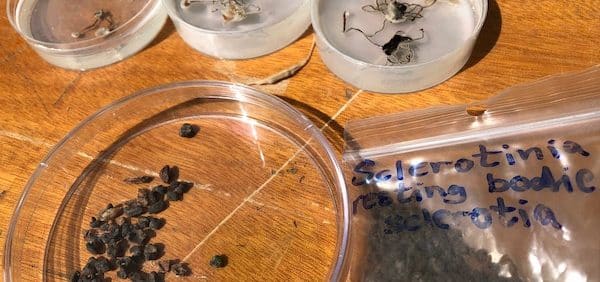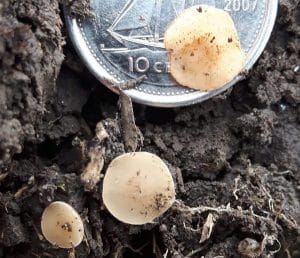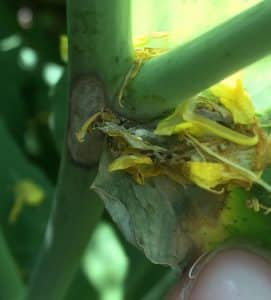Typically the application window for most fungicides is 20% to 50% flower. (See the product table at the bottom of the article.) This is peak flower when the field is at its yellowest.
If conditions are dry at early flower and then it rains at 40% to 50% flower, spraying at the end of the window may be effective – as long as there was enough moisture before flowering to get apothecia germinating. In this situation, later sprays could be especially effective if moisture also promoted a longer flowering window due to later compensatory growth. With lower seeding rates resulting in more branching, canola fields can be at 50% flower for a week or more.
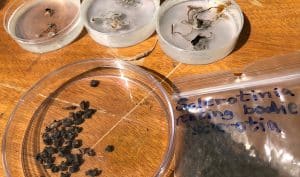
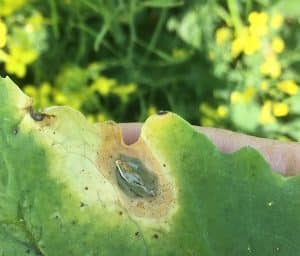
In general, late applications are not as effective as applications at 20% flower because early infection tends to cause the most yield loss. (But these economics can be the inverse in some cases, with later sprays providing a higher return.)
Remember that fungicide does not provide a curative benefit, so any infection present before application will not be stopped. A late application may stop subsequent infection, but infection that is already present can spread throughout the plant and from plant to plant in cases of extreme lodging, reducing the effectiveness of this late application.
Split applications (two lower rate applications 7 to 14 days apart as specified on the product label) can be worthwhile if conditions are good for fungal growth and the crop flowers for a long period.
Split applications might also be best for crops with a lot of plants at different stages. The first application can be made when the first plants reach recommended staging. If necessary, a second application can be made when the remaining plants are ready to be sprayed. Even if most of the crop seems to be less mature, an application when those earlier plants are at the right stage may pay off – if the crop is moist and yield potential is good – because those spore-infested petals can land on less mature (pre-flowering) plants and cause infection. Early infection on these less mature plants could cause higher yield loss because the disease will have that much longer to grow.
Applications after 50% flower are not on fungicide labels, and may be inside the pre-harvest interval for some fungicides.
